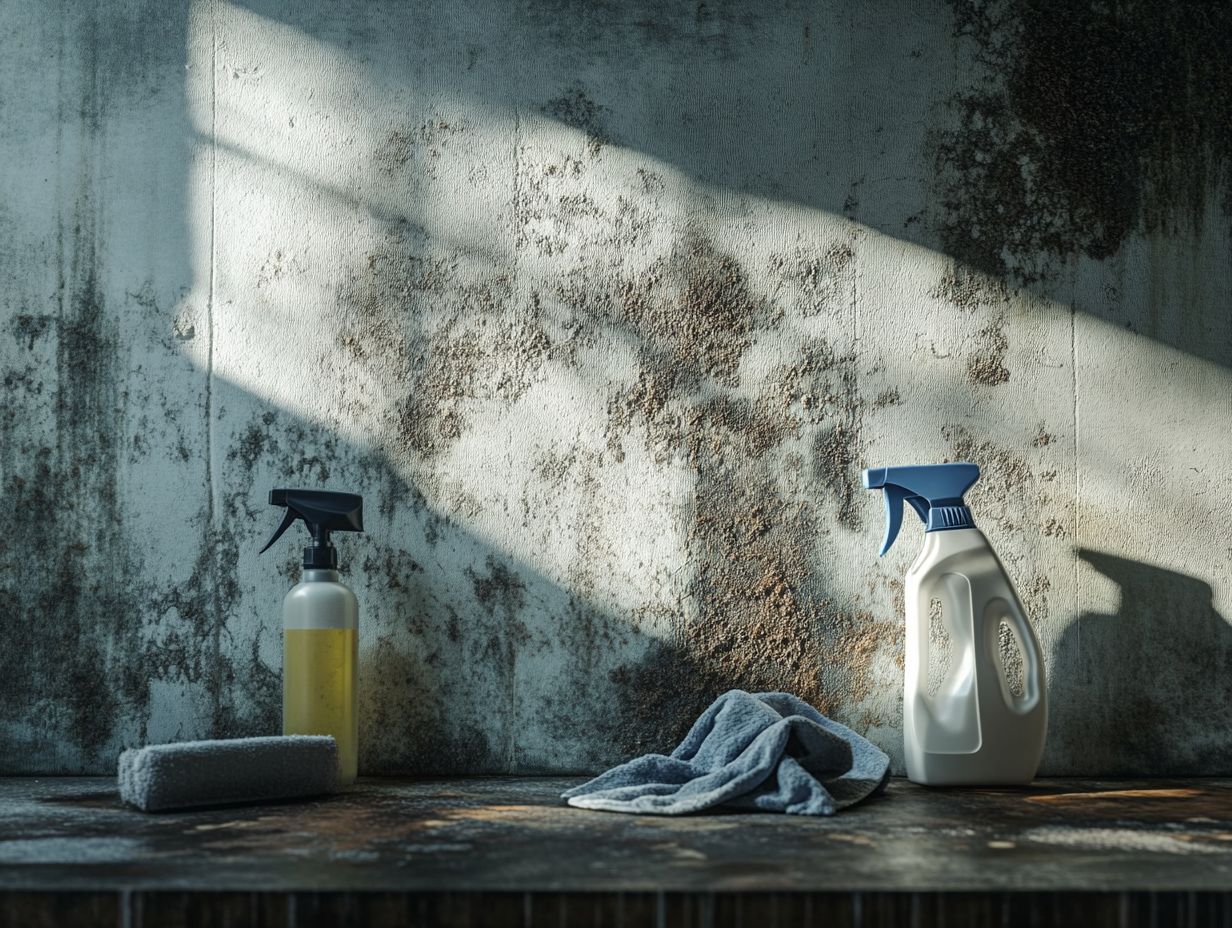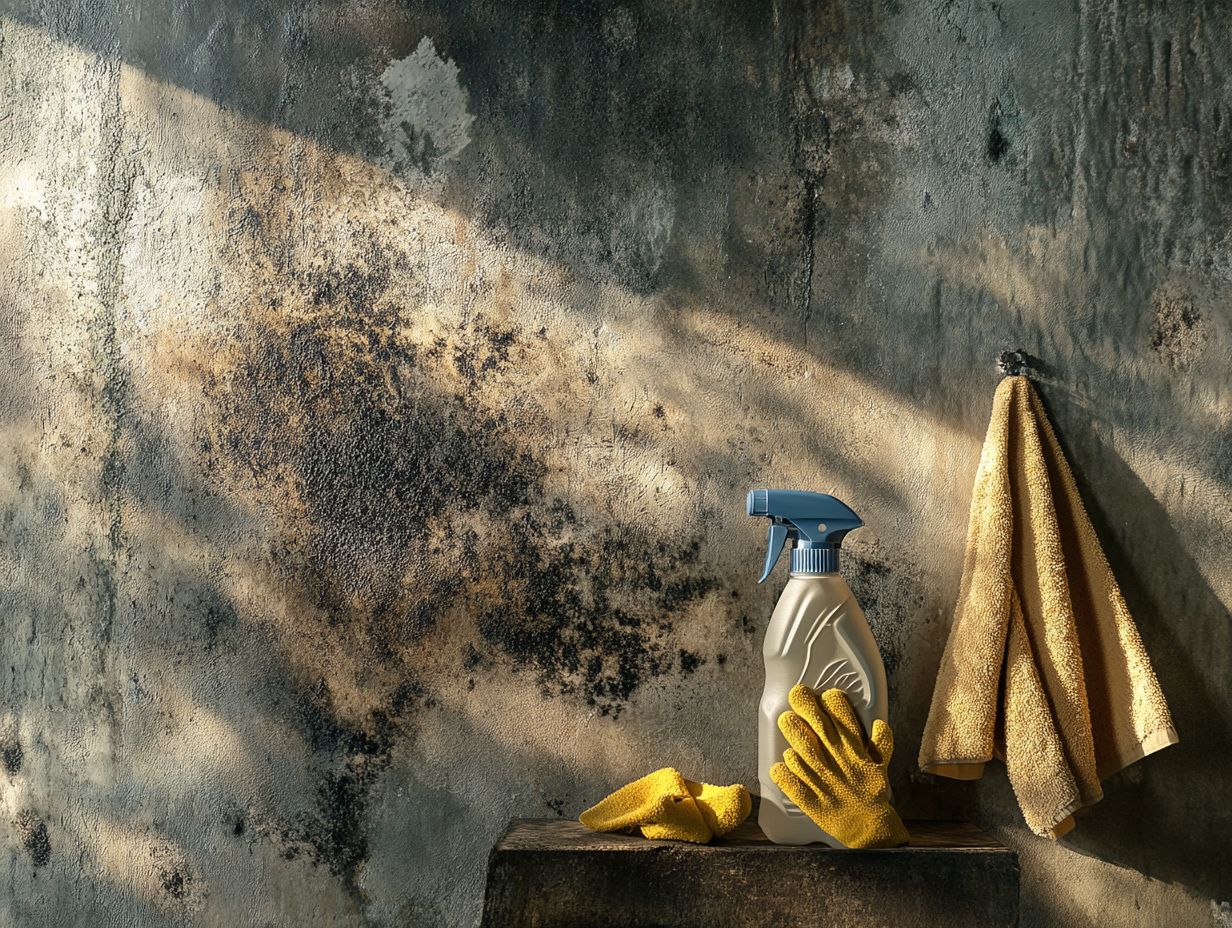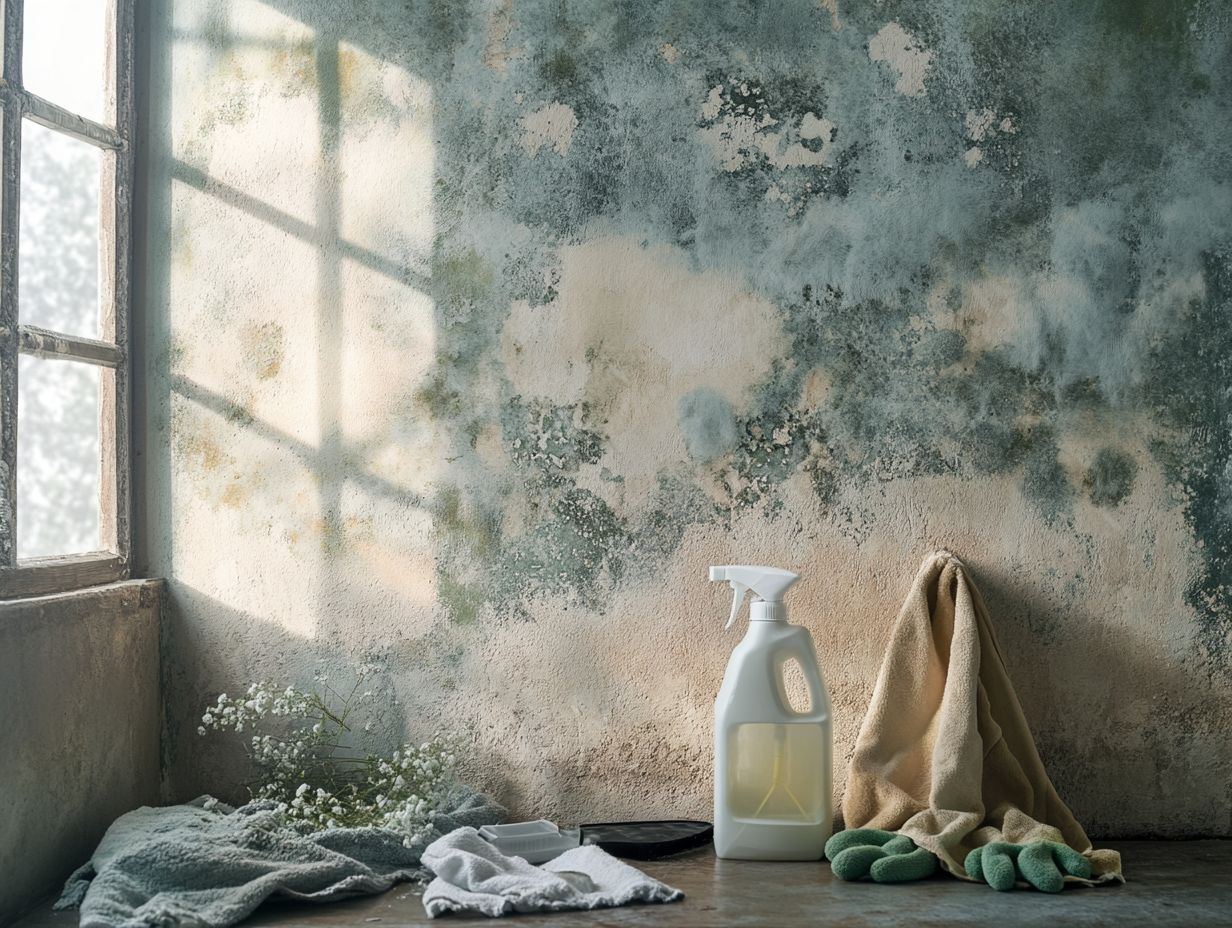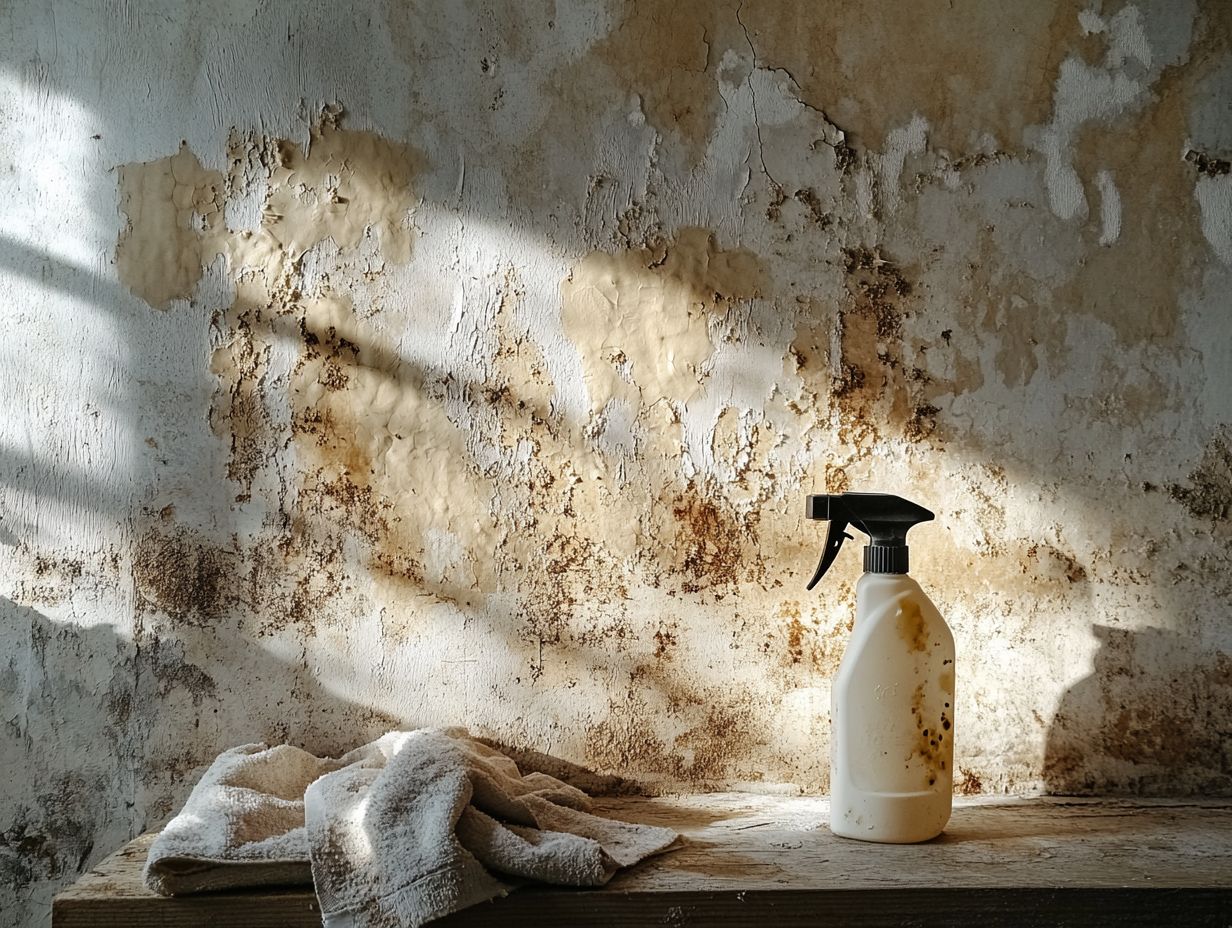Mold and mildew are common yet often overlooked problems that can pose serious health risks and cause damage to your home. This guide explores the various types of mold, the causes of mold growth, and the key signs to watch for in your living space.
It also discusses the potential health effects associated with mold exposure, along with practical strategies for prevention and removal. Whether you are looking to safeguard your home or address an existing mold issue, this information will provide you with the guidance you need, including mold remediation and cleaning tips.
What is Mold?

Mold is a type of fungus that thrives in moist environments and can be found both indoors and outdoors. It reproduces through tiny spores that easily travel through the air, often leading to infestations in homes and buildings with suitable conditions. These conditions include high humidity, poor ventilation, and dampness.
Understanding the characteristics and various types of mold, including black mold and toxic mold, is essential for effective mold prevention and remediation. Regular mold inspection is also a key preventative measure.
Definition and Types of Mold
“Mold type” refers to the various species of mold that can be found in different environments. The types of mold include common household mold, black mold, toxic mold, and more. Each type poses different health risks and challenges. Awareness of these mold types is essential for effective mold remediation.
Common household mold typically refers to species such as Aspergillus or Penicillium. These are the most prevalent forms of mold found in homes and are usually present in low concentrations. They tend to thrive in warm and damp areas, such as basements and bathrooms, and can lead to allergic reactions and respiratory symptoms. Using mold-resistant products in these areas can help mitigate growth.
Black mold is not a term used to describe a specific species; rather, it refers to mold that appears black in color. The most common type of black mold is Stachybotrys chartarum. This mold is often associated with poor indoor air quality and is frequently considered toxic. Black mold typically grows in areas with significant water damage, such as those affected by flooding or burst pipes, and can result in severe health issues, including chronic fatigue and neurological problems. Proper home maintenance and timely repair of water damage are critical in preventing black mold growth.
Toxic mold encompasses various types of mold that can produce harmful effects in humans. This includes all mold species capable of releasing dangerous mycotoxins into the air. The health effects of toxic mold often overlap with those of other mold types, making accurate diagnosis of mold-related health issues more challenging. Mold inspection and mold testing are essential for identifying toxic mold.
The essential growth conditions for different mold species vary, but generally include high humidity, organic material, and poor ventilation. Addressing these growth conditions through moisture control and proper air circulation can help prevent mold growth.
Causes of Mold Growth in Homes
Mold growth in homes occurs due to environmental conditions that promote high humidity, water damage from leaks or flooding, and inadequate ventilation. Understanding these causes is essential for effective mold prevention. Regular home inspection and maintenance are crucial for identifying and addressing these issues early.
Common Sources of Moisture

Common sources of moisture in homes that can lead to mold growth include humidity from bathrooms and kitchens, water leaks from plumbing issues, and dampness in basements and attics.
High humidity levels in these areas, often caused by cooking and showering, create an ideal environment for mold spores to thrive; using exhaust fans and ensuring proper ventilation can help to mitigate this issue. Additionally, mold-resistant materials can be used in high-humidity areas to further prevent mold growth.
Leaking pipes and faulty plumbing can introduce water into hidden spaces, making it difficult to detect and potentially leading to significant mold problems. Therefore, regular inspections and prompt repairs are essential to prevent water accumulation. Mold testing can also help identify hidden mold issues caused by plumbing leaks.
Basements and attics are particularly susceptible to dampness due to their locations, so implementing good insulation, using dehumidifiers, and addressing any drainage issues are effective strategies for controlling moisture levels. Weatherproofing these areas can also be beneficial in preventing moisture accumulation.
Signs of Mold in Your Home
The signs of mold in your home include visible mold growth, a musty odor, and allergic reactions or respiratory issues among the occupants. Additionally, mold growth signs may include allergy triggers like chronic cough and skin irritation.
Early identification of these signs is crucial for preventing mold growth and minimizing exposure. Regular mold testing can aid in early detection.
Identifying Visible and Hidden Mold
To identify both visible and hidden mold in your home, it is essential to conduct a careful inspection of surfaces, porous materials, and areas prone to dampness, as mold can often grow unnoticed behind walls and under carpets.
To effectively detect the presence of mold, look for signs such as discoloration, fuzzy growths, or staining on walls and ceilings, which may indicate moisture problems. An unpleasant, musty odor frequently accompanies mold and serves as a key indicator of hidden colonies that may be lurking in hard-to-reach areas.
Specialized tools, such as moisture meters and thermal imaging cameras, can be invaluable for detecting elevated humidity levels and identifying potential mold hotspots that are not visible to the naked eye. Mold testing kits can also be useful for homeowners to verify the presence of mold.
By employing these effective identification strategies, homeowners can initiate prompt removal of mold spores and address underlying moisture issues before they escalate into more significant problems. Using eco-friendly solutions like vinegar or baking soda for disinfecting mold-affected areas can be an effective DIY approach.
Health Risks Associated with Mold

Exposure to mold can pose serious health risks, particularly for individuals with allergies or pre-existing respiratory conditions. Certain varieties of mold, especially toxic mold, have been linked to significant health issues when exposure occurs over an extended period. Mold spores can also act as allergens, triggering respiratory issues and other health symptoms.
Potential Health Effects and Symptoms
Exposure to mold can lead to a range of health effects, including respiratory symptoms, allergic reactions, and irritation of the eyes and skin, especially in sensitive or immunocompromised individuals.
Mold spores present in the air can exacerbate chronic conditions such as sinusitis or asthma, and prolonged exposure may worsen symptoms, potentially leading to more serious health issues like lung infections or other respiratory illnesses.
Individuals with pre-existing conditions and the elderly are particularly vulnerable, as mold is a potent irritant that can intensify their symptoms. To limit exposure and protect overall health, it is essential to maintain proper ventilation, control humidity levels, and promptly repair any water leaks in the home. Using air quality monitors can help track indoor air quality and ensure a safer home environment.
Preventing Mold Growth
Preventing mold growth in the home can be achieved by controlling moisture levels, maintaining regular cleaning practices, and utilizing mold-resistant materials to promote a healthy indoor environment. Seasonal maintenance and following a prevention checklist are also key strategies.
Effective Strategies and Tips

Effective strategies for mold prevention include ensuring proper ventilation, utilizing dehumidifiers to maintain low humidity levels, and regularly cleaning wet surfaces. These measures are essential for creating an environment that is less conducive to mold growth.
Proper ventilation facilitates air circulation and helps remove moisture, particularly in high-humidity areas such as bathrooms and kitchens. Dehumidifiers function by extracting excess moisture from the air, keeping humidity levels below 60%, which is the threshold preferred by mold spores. Implementing moisture barriers in these areas can further aid in moisture control.
Additionally, regular and thorough cleaning of areas prone to moisture buildup, such as beneath kitchen sinks and behind appliances, helps prevent mold growth. Using cleaning agents like bleach solution can be effective for disinfecting these areas. Implementing these strategies not only improves air quality but also promotes a healthier living environment for everyone.
Removing Mold from Your Home
Mold removal is essential for maintaining a healthy home. There are various methods to eliminate mold, ranging from do-it-yourself approaches for small infestations to hiring professionals for extensive mold remediation. Proper home inspection and mold testing can help determine the extent of mold infestation.
DIY vs Professional Methods
Homeowners often attempt to remove mold on their own for small infestations; however, larger mold problems require professional assessment and remediation for safe and effective removal. Professional services adhere to safety practices and community guidelines.
While DIY techniques for mold remediation may seem appealing due to their low cost and the accessibility of materials, the results are often inadequate. This is particularly true for more stubborn types of mold, which can easily spread if not properly addressed.
Professional mold removal services offer the necessary tools, equipment, and expertise in identifying various mold types, along with access to comprehensive mold assessment procedures. These services ensure safer practices and thorough mold removal, significantly reducing health hazards associated with exposure to mold spores. This can also help in maintaining property value and meeting landlord responsibilities.
Ultimately, although the initial costs of professional mold removal may be higher, the long-term benefits of a safer and healthier home environment, along with the peace of mind that comes from knowing the job was done correctly, make the investment worthwhile. DIY solutions may suffice for minor issues, but professional services are recommended for significant mold remediation.


